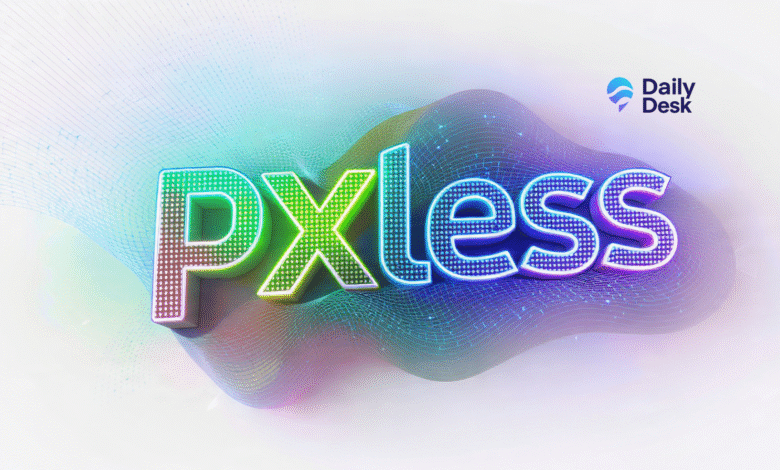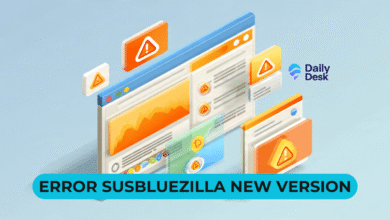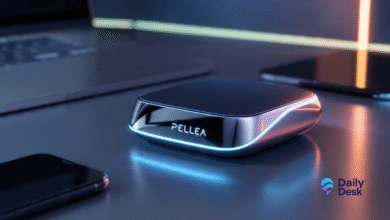Pxless: The Powerful Future of Web Design and Digital Creativity

In the fast-evolving world of digital design, pxless represents a revolutionary shift in how we approach creativity, responsiveness, and user experience. As the internet continues to transform, designers and developers are looking beyond traditional pixel-based systems to embrace a more fluid, scalable, and adaptive future.
Today, we’ll explore what pxless truly means, why it’s reshaping the digital landscape, and how this modern concept is redefining the aesthetics and performance of websites around the globe.
What Does Pxless Mean?
The term refers to a design philosophy that moves away from fixed pixel dimensions and embraces relative, flexible units. Instead of being confined by pixel-perfect layouts, this design approach prioritizes adaptability, allowing websites to automatically adjust to any screen size or resolution.
In simple terms, it’s about building smarter interfaces that don’t depend solely on fixed measurements.
Why Traditional Pixel-Based Design Is Limiting
For years, designers relied heavily on fixed pixel measurements. This made sense when most people used desktops or laptops with similar screen resolutions. But with the explosion of smartphones, tablets, smart TVs, and wearables, pixel-based design started to crack under pressure.
A rigid layout that looks stunning on one screen can appear broken or cramped on another. This inconsistency leads to poor user experiences, longer load times, and even reduced SEO performance — all problems that flexible, adaptive design aims to solve.
The Rise of Responsive and Pxless Design
Responsive design was the first major step toward flexibility. Pxless design takes that a step further by fully embracing fluid grids, relative typography, and adaptable spacing. It ensures that every element — from text to images — dynamically scales according to the viewing environment.
This new approach allows your content to remain visually appealing and functionally seamless, regardless of device or orientation.
Core Principles of Modern Flexible Design
To master adaptive design, you need to understand the core principles that power it:
- Fluid Grids – Instead of rigid columns, designers use percentages or fractions to define widths, making layouts stretch or shrink naturally.
- Responsive Typography – Text automatically scales for readability on any device using
em,rem, orvwunits. - Flexible Media – Images and videos adjust dynamically to container sizes without losing quality.
- Minimal Hardcoding – Fewer fixed values mean faster load times and greater compatibility.
These principles ensure that modern websites are both beautiful and efficient.
Benefits of Adopting a Pxless Approach
1. Seamless User Experience
Users access websites from countless devices. A pxless-inspired design guarantees that every visitor enjoys a clean, optimized experience — whether they’re on a 6-inch phone or a 40-inch monitor.
2. Better SEO Performance
Google’s algorithms prioritize mobile-friendly and fast-loading websites. Fluid layouts contribute to both, boosting your site’s visibility in search rankings.
3. Faster Development and Maintenance
By using flexible frameworks, developers spend less time adjusting elements for specific devices. Updates become quicker, cheaper, and more consistent.
4. Future-Proof Design
As new devices enter the market, adaptable layouts automatically adjust without the need for major redesigns.
How Adaptive Design Enhances Brand Identity
Brand perception often depends on design consistency. A pxless approach ensures that your brand visuals — from color palettes to logos — remain intact and aligned across all digital touchpoints.
When users recognize your brand instantly on any platform, you build trust, credibility, and a stronger digital identity.
The Role of CSS in Pxless Design
Modern CSS tools like Flexbox, Grid Layout, and Clamp() functions are the backbone of pxless web design. They allow developers to control elements fluidly while maintaining design integrity.
For example:
h1 {
font-size: clamp(1.5rem, 2vw, 3rem);
}
This ensures that headings automatically scale with screen size — no pixel tweaking required.
By using such tools effectively, websites deliver both performance and aesthetics effortlessly.
Why Designers Are Moving Toward Pxless Systems
Creative professionals are increasingly favoring adaptive systems because they eliminate the repetitive guesswork of resizing and testing. Instead of designing multiple fixed templates, designers can focus on visual storytelling, accessibility, and innovation.
This modern mindset aligns perfectly with minimalism, interactivity, and sustainability — three key trends shaping the future of digital experiences.
Common Misconceptions About Pxless Design
Let’s clear up some myths that often confuse beginners:
- “Pxless means no pixels at all.”
Not true — it means no fixed pixels. Relative units still work behind the scenes. - “It’s only for advanced developers.”
While it requires understanding responsive techniques, anyone can learn it with basic CSS and design principles. - “It limits creativity.”
Pxless-inspired design actually enhances creativity by removing rigid boundaries.
Understanding these truths helps more creators embrace adaptive systems confidently.
Tools and Frameworks Supporting Modern Pxless Design
Here are some tools that make this design process easier:
- Tailwind CSS – Encourages utility-first, responsive design without pixel dependency.
- Bootstrap 5+ – Introduces fluid grids and variable font sizes.
- Framer & Figma – Offer adaptive prototyping for flexible layouts.
- CSS Variables – Allow real-time adjustments for consistent scaling.
These tools empower developers and designers to collaborate effectively in building truly adaptive websites.
Accessibility and Pxless Design
A core strength of pxless layouts is their inherent accessibility. By scaling naturally, interfaces cater to users with different visual preferences or disabilities.
Elements like adjustable font sizes, high contrast modes, and scalable buttons help ensure inclusivity — an essential aspect of modern UX and compliance with global accessibility standards.
Performance Optimization with Pxless Layouts
Performance is a major factor in web success. Since flexible websites rely less on heavy graphic adjustments and more on clean CSS, they typically load faster and consume fewer resources.
Fast load times reduce bounce rates, increase conversions, and signal high-quality site performance to search engines.
The Impact of Pxless Design on E-Commerce
For online stores, pxless layouts mean consistent shopping experiences across all devices. Whether a user browses products on mobile or desktop, every element — from the “Add to Cart” button to product galleries — remains sharp, clear, and responsive.
This adaptability can directly boost conversion rates and customer satisfaction.
Future Trends in Pxless Web Design
The next generation of web design will likely see AI-driven pxless systems, where machine learning automatically adjusts layouts based on user behavior. We’ll also see deeper integration with AR/VR experiences, creating immersive environments that adapt seamlessly to any viewing context.
The pxless philosophy will evolve from a design choice to an industry standard.
Best Practices for Implementing Pxless Design
If you’re ready to adopt pxless design, follow these best practices:
- Start with a mobile-first mindset.
- Use relative units like
%,em,rem, orvw. - Test your layouts on multiple devices regularly.
- Keep typography fluid using CSS Clamp or viewport units.
- Prioritize accessibility from day one.
Following these guidelines ensures your website remains consistent, efficient, and future-ready.
Challenges of Going Pxless
While adaptive design offers many advantages, it’s not without challenges. Beginners may find it tricky to predict how elements behave on unusual screens. Testing across browsers and devices is essential.
Also, overusing fluid values can lead to chaotic layouts if not handled properly. Balance is the key to success.
Conclusion: The Pxless Revolution Is Here
As the digital world moves toward smarter, more adaptive systems, pxless design stands at the forefront of innovation. It offers flexibility, accessibility, and visual harmony that pixel-fixed layouts simply can’t match.
By embracing pxless principles today, you future-proof your brand, enhance your SEO, and deliver exceptional user experiences that stand the test of time.
Read Also: Tribupneu: The Next Big Innovation Transforming Modern Industries





